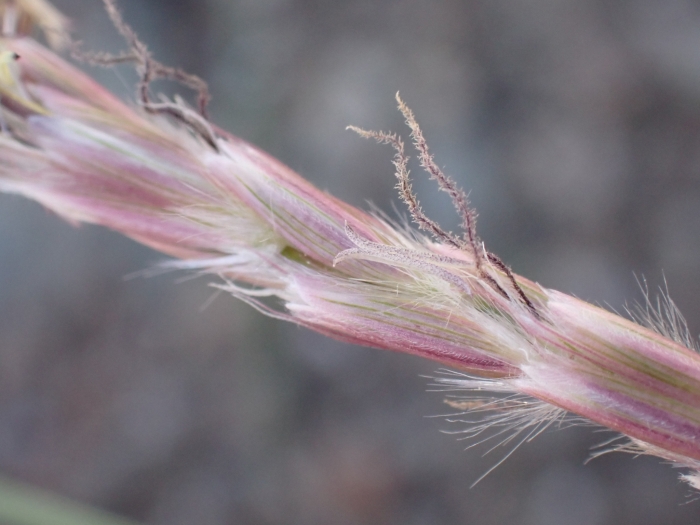James’ Galleta
(Hilaria jamesii)
James’ Galleta (Hilaria jamesii)
/
/

Chloe and Trevor Van Loon
CC BY 4.0
Image By:
Chloe and Trevor Van Loon
Recorded By:
Copyright:
CC BY 4.0
Copyright Notice:
Photo by: Chloe and Trevor Van Loon | License Type: CC BY 4.0 | License URL: http://creativecommons.org/licenses/by/4.0/ | Rights Holder: Chloe and Trevor Van Loon | Publisher: iNaturalist | Date Created: 2023-10-08T09:27:51-07:00 |

























Estimated Native Range
Summary
Hilaria jamesii, commonly known as James’ galleta, is a perennial grass that is native to the arid and semi-arid regions of the southwestern United States, particularly adapted to desert grasslands, pinyon-juniper woodlands, and open scrublands. It is well-suited to the northern Mojave Desert’s harsh conditions. James’ galleta typically grows up to 24 inches tall and is characterized by its erect stems and a woody rhizome system that enables it to form dense sod, which can help with soil stabilization. The inflorescence features distinctive hairy, rectangular spikelets that contribute to its ornamental value. Flowering occurs in the late spring to early summer, and while the flowers are not particularly showy, they are an important food source for wildlife.
James’ galleta is valued for its drought tolerance and its ability to thrive in poor, well-drained soils, making it an excellent choice for xeriscaping and restoration projects in arid regions. It requires minimal maintenance once established and can be used for erosion control due to its sod-forming habit. This grass prefers full sun exposure and is rarely affected by pests or diseases, making it a reliable and low-care option for gardeners in suitable climates. However, it is not typically used in small gardens due to its spreading nature and is better suited for larger landscapes where it can naturalize.CC BY-SA 4.0
James’ galleta is valued for its drought tolerance and its ability to thrive in poor, well-drained soils, making it an excellent choice for xeriscaping and restoration projects in arid regions. It requires minimal maintenance once established and can be used for erosion control due to its sod-forming habit. This grass prefers full sun exposure and is rarely affected by pests or diseases, making it a reliable and low-care option for gardeners in suitable climates. However, it is not typically used in small gardens due to its spreading nature and is better suited for larger landscapes where it can naturalize.CC BY-SA 4.0
Plant Description
- Plant Type: Grass
- Height: 1-2 feet
- Width: 1-1.5 feet
- Growth Rate: Moderate
- Flower Color: N/A
- Flowering Season: Summer
- Leaf Retention: Semi-deciduous
Growth Requirements
- Sun: Full Sun
- Water: Low
- Drainage: Fast
Common Uses
Drought Tolerant, Erosion Control, Low Maintenance
Natural Habitat
Desert grasslands, pinyon-juniper woodlands, and open scrublands
Other Names
Common Names: Galleta Grass
Scientific Names: , Hilaria jamesii, Hilaria sericea, Pleuraphis jamesii, Pleuraphis sericea, Pleuraphis sericea,
GBIF Accepted Name: